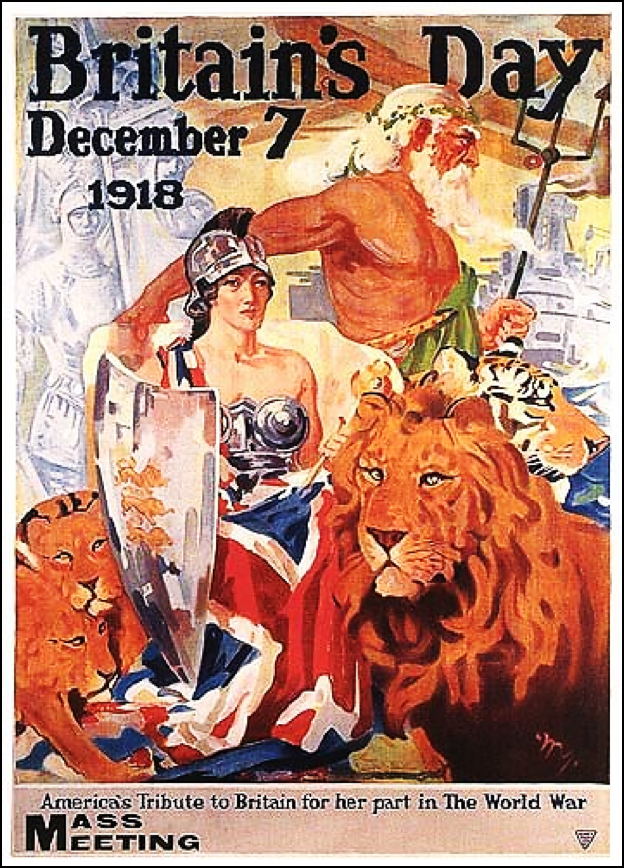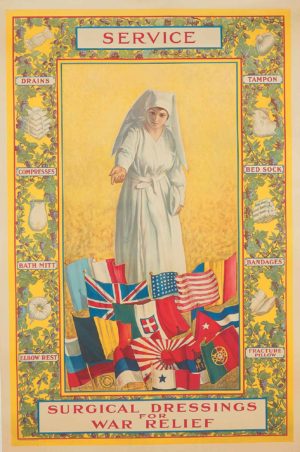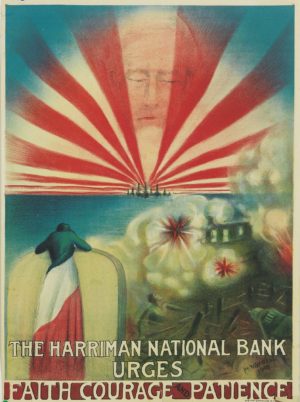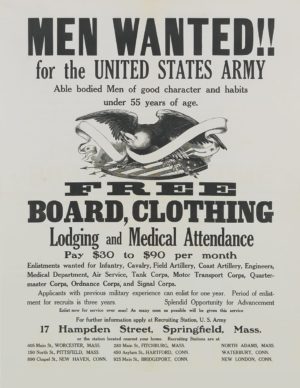Description
Artist Unknown (MP)Britain’s Day December 1918 1918. Scholar Dr. John Johnson writes extensively about this wonderful poster. “In addition to her classical breastplate and helmet, Britannia is clothed in a magnificent Union Flag that begins thinly from her right shoulder, drapes widely across her lap, and then falls to the ground where it forms a carpet on which stand two adjacent lions. On her right she holds a shield on which are the three heraldic lions of England; in her left hand she holds a scepter. Just to the right at her feet is a large male lion with magnificent mane, yet another symbol of British might. He, the Bengal tiger behind him, and the two previously mentioned lions are symbols of the mother country and the associated and overseas states of the British Empire.Behind and to Britannia’s left is the dignified figure of Neptune (Poseidon), pagan god of the sea. In his left hand, he holds the triton, his traditional weapon and symbol of power. His right arm extends behind Britannia with his hand resting on the back of her throne, suggesting that he has embraced her as the rightful heir to command of the sea. Britannia and Neptune were frequently associated in British naval heroic art. For example, a painting commissioned for Osborne House by Prince Albert, husband of Queen Victoria, made clear that Britannia was the successor to Neptune. Neptune’s long white beard flows outward caught by the gale in the tumultuous scene behind him. It serves as a transitional device to move the viewer from Neptune himself, a mythological representation of mastery of the sea, to a magnificent modern warship, a symbol of the reality of British sea power. Neptune’s flowing beard connects his figure to the stacks of the ship, which in turn emit smoke that forms an abstract vision of a biplane, symbol of Britain’s new power in the air, while simultaneously suggesting the traditional British naval ensign fluttering across the sky. To the left and behind Britannia are symbols of traditional British military might on land. In muted tones of gray are ancient Celtic warriors and a fully armored knight, who stands vigil with sword and lance at the ready (the British soldier as chivalrous knight is a common theme in posters of the Great War. The overall composition of the poster echoes figures from that most classical of ancient monuments, the east pediment of the Parthenon. A reclining goddess on the right has been replaced by a large male lion and an imposing goddess to the left has been replaced by gray ghostly warriors, but the poster’s debt to the outline of the pediment’s sculpture is clear. 39×27 near mint, conservation backed.





